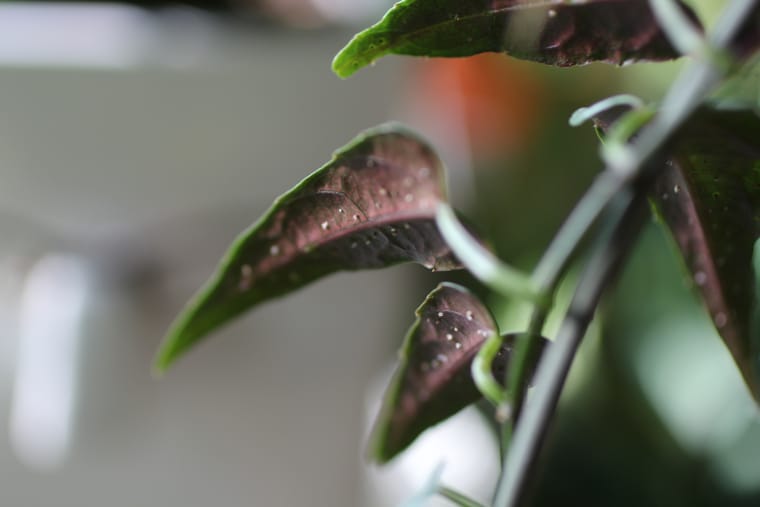Beautiful Plants For Your Interior

The plant kingdom is a treasure trove of intricate and fascinating details, often hidden in plain sight. Among these captivating mysteries are the tiny, opaque dots that grace the back of Cissus amazonica leaves. In this article, we embark on a botanical journey to uncover the enigma behind these minute structures and their role in the life of this exotic houseplant.
Cissus amazonica: A Brief Introduction:
Before we delve into the secrets of these dots, let’s acquaint ourselves with Cissus amazonica:
- Botanical Wonder: Cissus amazonica is a species of tropical vine known for its lush, heart-shaped leaves and vibrant green foliage. It’s a popular choice among houseplant enthusiasts for its striking appearance.
The Mystery of the Tiny Opaque Dots:
- Trichomes: The tiny opaque dots on the back of Cissus amazonica leaves are known as trichomes. Trichomes are small hair-like structures found on the surface of various plant parts, including leaves.
- Varied Functions: Trichomes serve various functions in plants, and their presence can differ between species. In Cissus amazonica, these trichomes have specific roles:
- Protection: Trichomes can act as a defense mechanism, deterring herbivores and insects from feasting on the plant’s tender foliage.
- Moisture Retention: Some trichomes help in reducing water loss by creating a barrier that limits transpiration.
- Sunscreen: In certain plants, trichomes can also provide protection from excessive sunlight by reflecting or diffusing light.
Caring for Cissus amazonica:
Understanding the presence of trichomes on Cissus amazonica leaves can also offer insights into the care of this houseplant:
- Light: Provide bright, indirect light to mimic its natural habitat in the understory of tropical forests.
- Watering: Allow the top inch (2.5 cm) of soil to dry out between waterings to prevent root rot. Trichomes can help in moisture retention but do not overwater.
- Humidity: Cissus amazonica appreciates higher humidity levels. Regular misting or placing the plant near a humidifier can be beneficial.
- Fertilization: Feed your plant with a balanced, water-soluble fertilizer during the growing season (spring through summer) to support healthy growth.
Conclusion: Nature’s Tiny Guardians:
The tiny opaque dots on the back of Cissus amazonica leaves, revealed to be trichomes, are nature’s miniature guardians. They play a role in protecting the plant from threats, retaining moisture, and potentially moderating sunlight exposure. By tending to the care needs of your Cissus amazonica, you not only ensure its health but also appreciate the marvels of nature’s intricate designs, even in the tiniest of details.